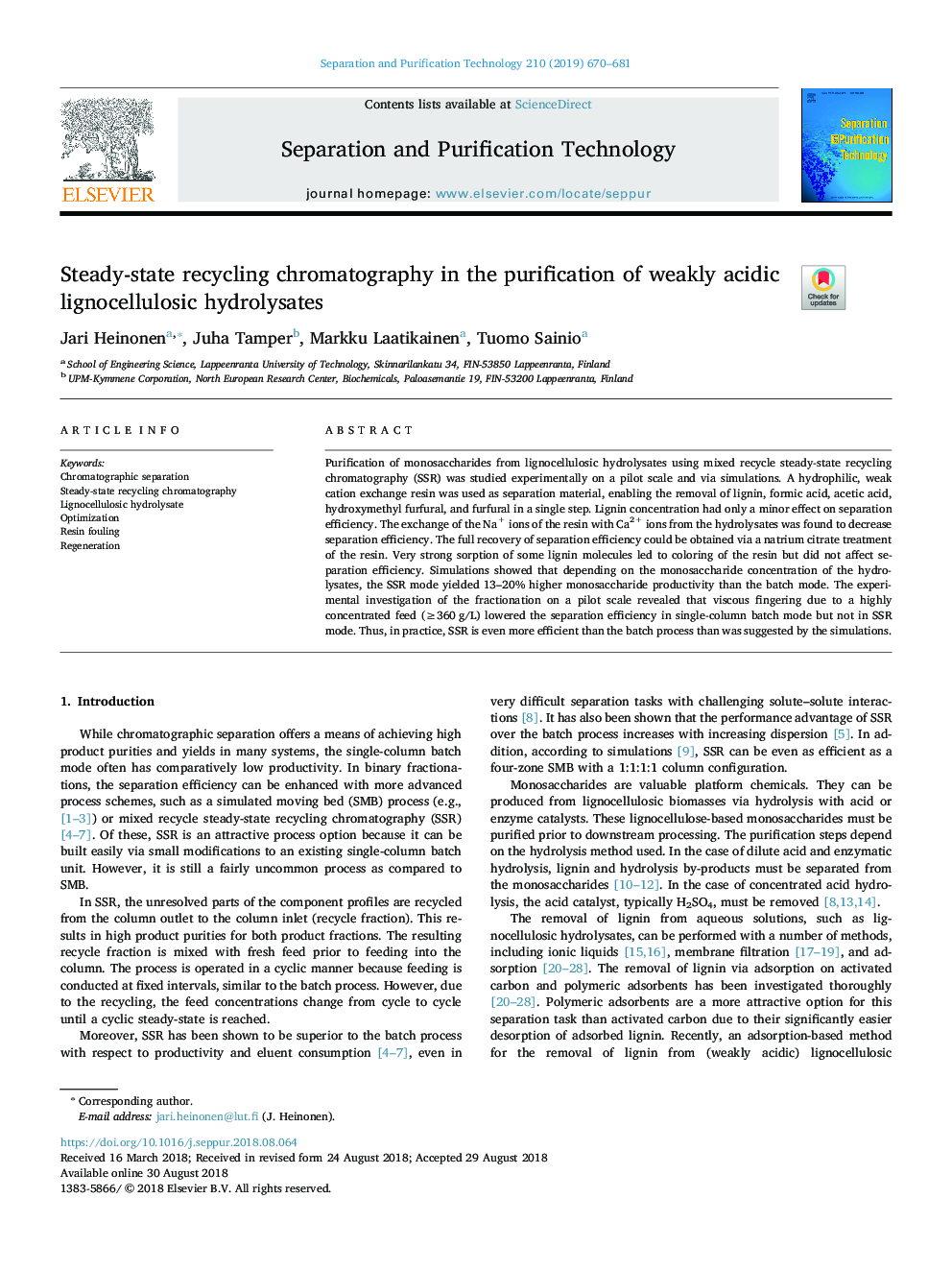| Article ID | Journal | Published Year | Pages | File Type |
|---|---|---|---|---|
| 11003299 | Separation and Purification Technology | 2019 | 12 Pages |
Abstract
Purification of monosaccharides from lignocellulosic hydrolysates using mixed recycle steady-state recycling chromatography (SSR) was studied experimentally on a pilot scale and via simulations. A hydrophilic, weak cation exchange resin was used as separation material, enabling the removal of lignin, formic acid, acetic acid, hydroxymethyl furfural, and furfural in a single step. Lignin concentration had only a minor effect on separation efficiency. The exchange of the Na+ ions of the resin with Ca2+ ions from the hydrolysates was found to decrease separation efficiency. The full recovery of separation efficiency could be obtained via a natrium citrate treatment of the resin. Very strong sorption of some lignin molecules led to coloring of the resin but did not affect separation efficiency. Simulations showed that depending on the monosaccharide concentration of the hydrolysates, the SSR mode yielded 13-20% higher monosaccharide productivity than the batch mode. The experimental investigation of the fractionation on a pilot scale revealed that viscous fingering due to a highly concentrated feed (â¥360â¯g/L) lowered the separation efficiency in single-column batch mode but not in SSR mode. Thus, in practice, SSR is even more efficient than the batch process than was suggested by the simulations.
Related Topics
Physical Sciences and Engineering
Chemical Engineering
Filtration and Separation
Authors
Jari Heinonen, Juha Tamper, Markku Laatikainen, Tuomo Sainio,
